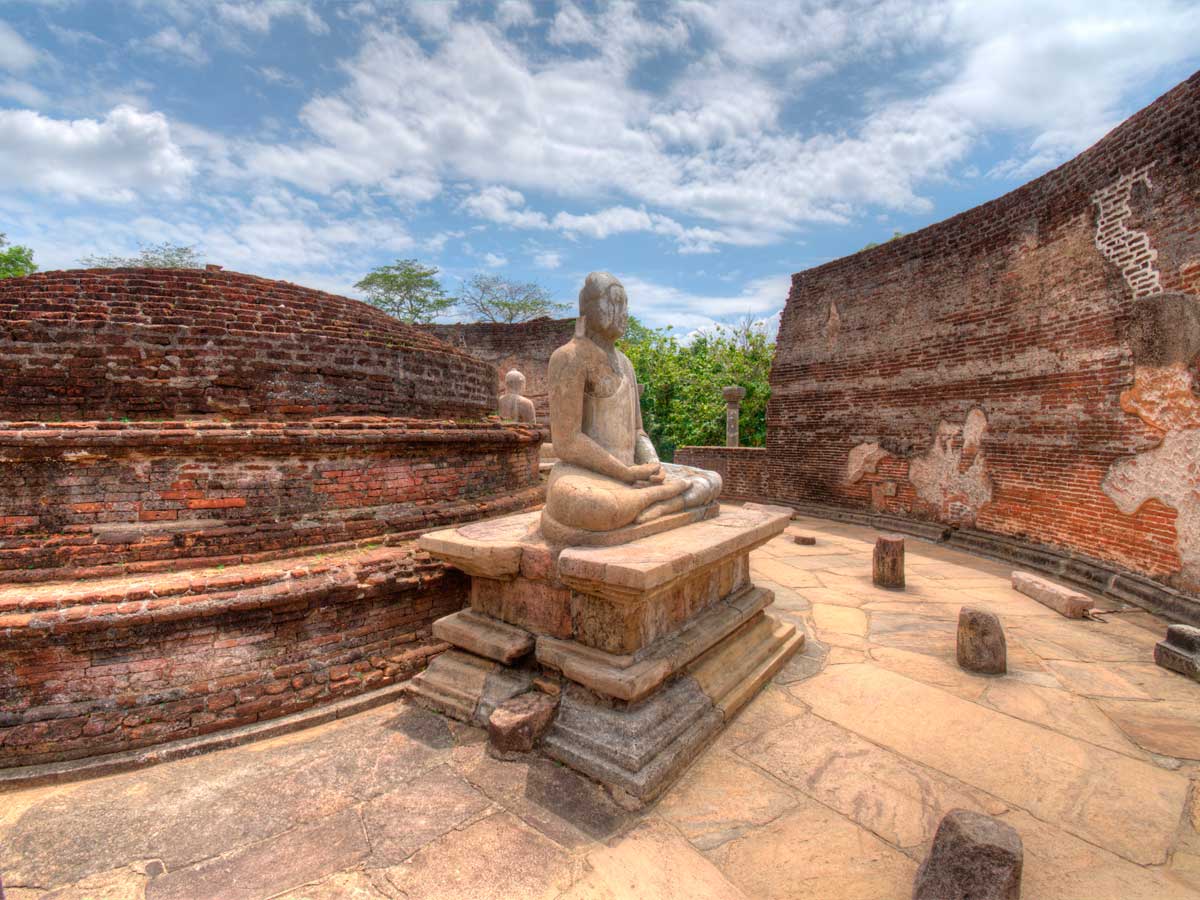
Marking out the points of Anuradhapura, Polonnaruwa and Dambulla – and covering everything else in between – Sri Lanka’s renowned Cultural Triangle is a treasure trove of ancient monuments, royal cities, Buddhist temples and wildlife. The ancient cities of Anuradhapura and Polonnaruwa once served as the pinnacle of early Sinhalese civilization and both offer a wealth of historical and religious sites, whilst the cave temples of Dambulla make up the third point of the triangle. Within the triangle, you’ll also find the iconic Sigiriya Lion Rock fortress and the national parks of Kaudulla and Minneriya, both great locations for elephant safaris in open-topped jeeps.
On our trip to Sri Lanka, we spent 3 days visiting the cultural triangle, which is the perfect amount of time to see either Anuradhapura or Polonnaruwa, Sigiriya Lion Rock, Dambulla and go on an elephant safari. You could probably do both Anuradhapura or Polonnaruwa in this time although it may be less leisurely! Adding an extra day or two would allow more scope to visit both ancient capitals and have time to check out some of the lesser-visited sites including the abandoned citadel of Yapahuwa, the rock-carved standing Buddha at Aukana, the mysterious forest monastery of Ritigala and the colourful cave temple of Aluvihara.
As mentioned in our previous articles on Sri Lanka, the best way to maximise your time and best experience touring Sri Lanka is with a personal driver/guide. Our driver Dimuthu from Tharul Tours was able to organise our tickets and help us get the most out of our visits in the Cultural Triangle, our Elephant safari at Kaudulla National Park was also booked for us a couple of days in advance.
Our itinerary for the Cultural Triangle was based on 3 days and we visited Dambulla on the first day as we were travelling from Kandi. This made sense as Dambulla is also fairly close to Sigiriya where we enjoyed 3 nights at the fabulous Water Garden Sigiriya hotel. We then spent day two visiting Polonnaruwa – which took most of the day. Day three we spent the morning at Sigiriya Lion Rock followed by an afternoon Elephant safari in Minneriya or Kaudulla National Park.
Dambulla
Situated on a soaring granite outcrop at the heart of the Cultural Triangle, the ornately painted cave temples of Dambulla are the best preserved in Sri Lanka, dating back to the 1st century and filled with colourful Buddha statues and murals.
The caves were built as a symbol of gratitude by a Sinhalese king forced into hiding by Tamils who invaded Anuradhapura and ousted him from his throne. They are positioned under a large rock overhang with partition walls built to separate the cave into individual temples. The site has been renovated, remodelled and repainted several times by various kings over the years, continuing well into the 20th century, however, the style and appearance of the art is surprisingly coherent.
There are five caves in total, each with a differently decorated interior and statues. After you have paid for your ticket at the entrance to the cave complex you will have to remove your footwear and leave it with the attendants in the area close to the entrance. After walking through the entrance you will find yourself in a small courtyard with the entrance to each cave of the right-hand side.
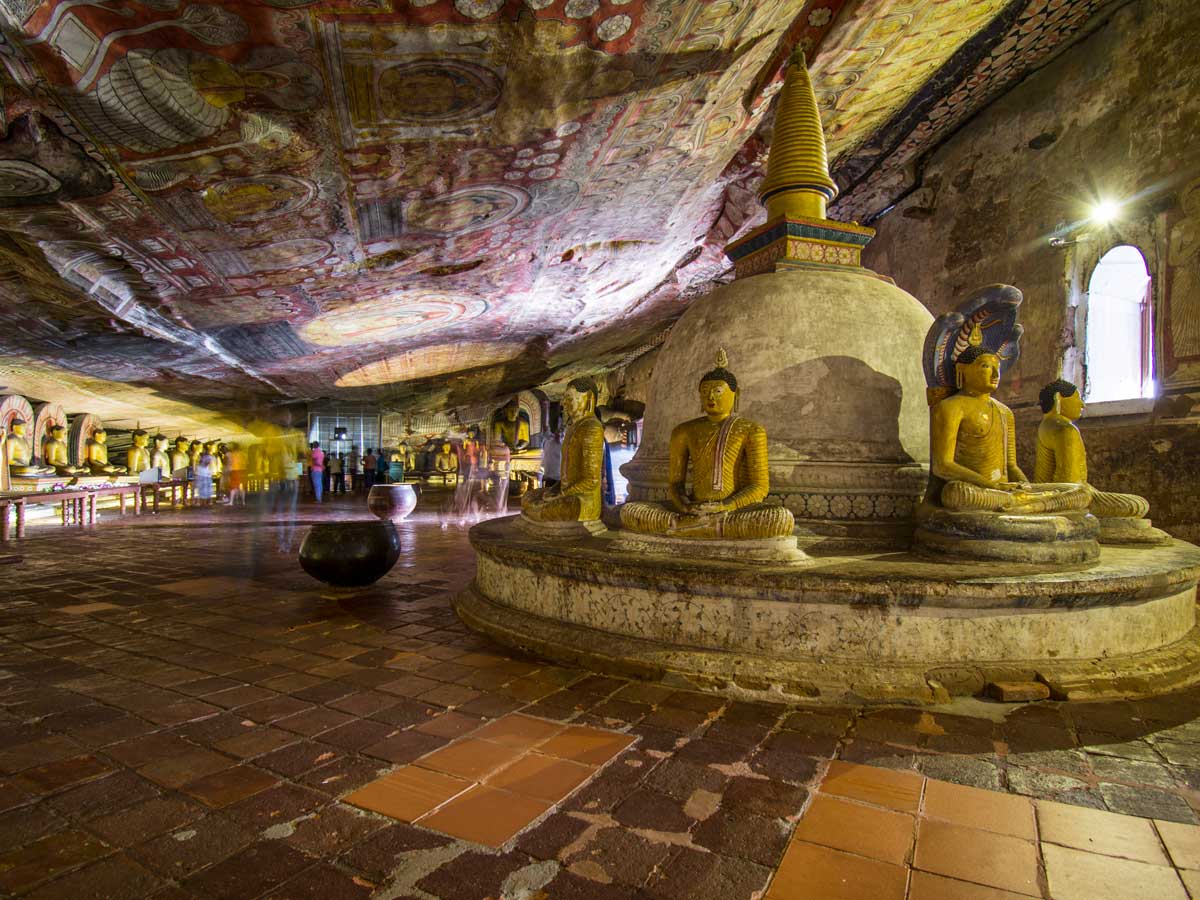
Dambulla Cave Temple (Cave 2)
Today the main attractions of Dambulla are spread across five separate cave temples. Inside the narrow Cave 1 you can find a 15m-long recumbent Buddha carved out of solid rock with beautifully painted feet and delicate traces of the gold gilding that would have once covered most of the sculpture. Cave 2 is by far the largest and most impressive of the, with over 150 life-size statues and images of Buddha, and extraordinary murals covering the ceiling and walls illustrating historic and religious events. Next door is Cave 3 which also contains some interesting murals although the highlight here is the solid rock meditating Buddha. The relatively small Cave 4 is notable for the Dagobah that sits in the centre while Cave 5 is the smallest of the group with brick and plaster Buddha statues.
The cave temple complex is around a 10 minute walk / hike from the car park below and also offers stunning views of the surrounding landscape scattered with limestone casts.
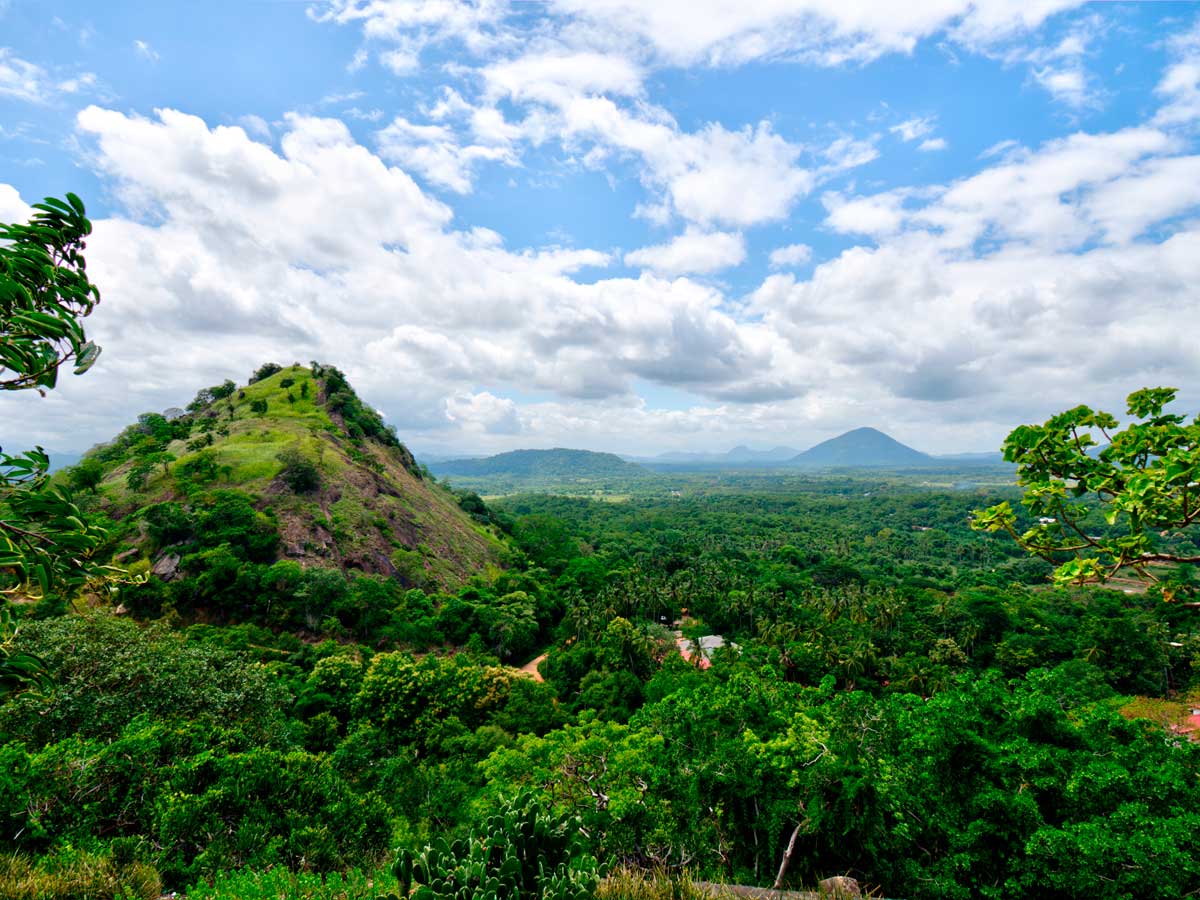
View from Dambulla Cave Temples
Polonnaruwa
As the capital of Sri Lanka during the 11th and 13th centuries, the great ruined city of Polonnaruwa characterises medieval Sri Lanka at its finest. Polonnaruwa took over from Anuradhapura as the capital after the sacred city was destroyed and left deserted, although Polonnaruwa is confined within a more compact area than Anuradhapura. The extensive remains in Polonnaruwa are brilliantly preserved and would have once been surrounded by three concentric walls, of which very little remains standing today.
The royal palace complex sits in the central Citadel where the city walls have been heavily restored to encompass the imposing base of the Council Chamber and the Royal Baths surrounded by encroaching vegetation. This group of buildings dates from the period of King Parakramabahu I (1153 – 1186). The King's Royal Palace is a huge structure, measuring 31 m by 13 m, once including 50 rooms supported by 30 columns. The King's Audience Hall is one of the best-preserved structures in the Royal Palace Group, with beautiful stone carved elephants on the walls.
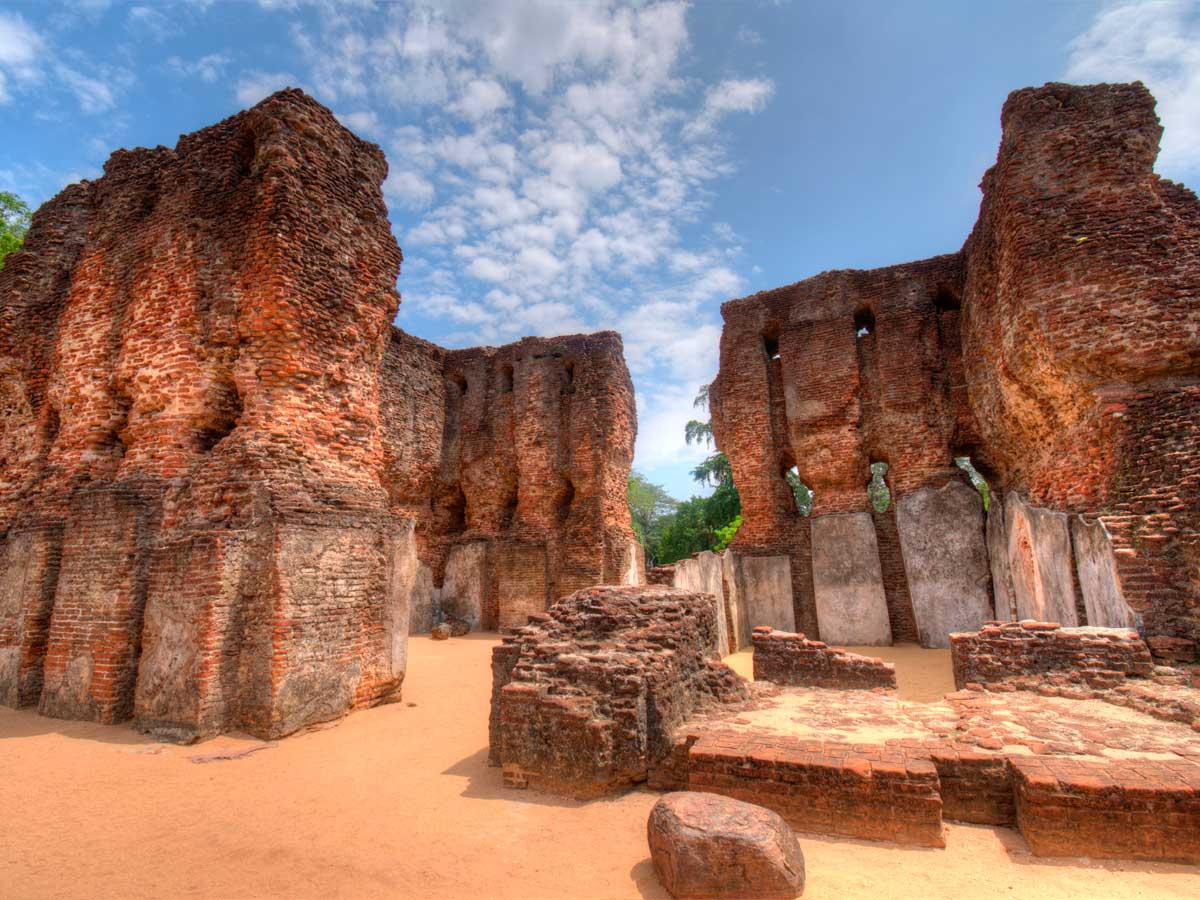
The Royal Palace Polonnaruwa
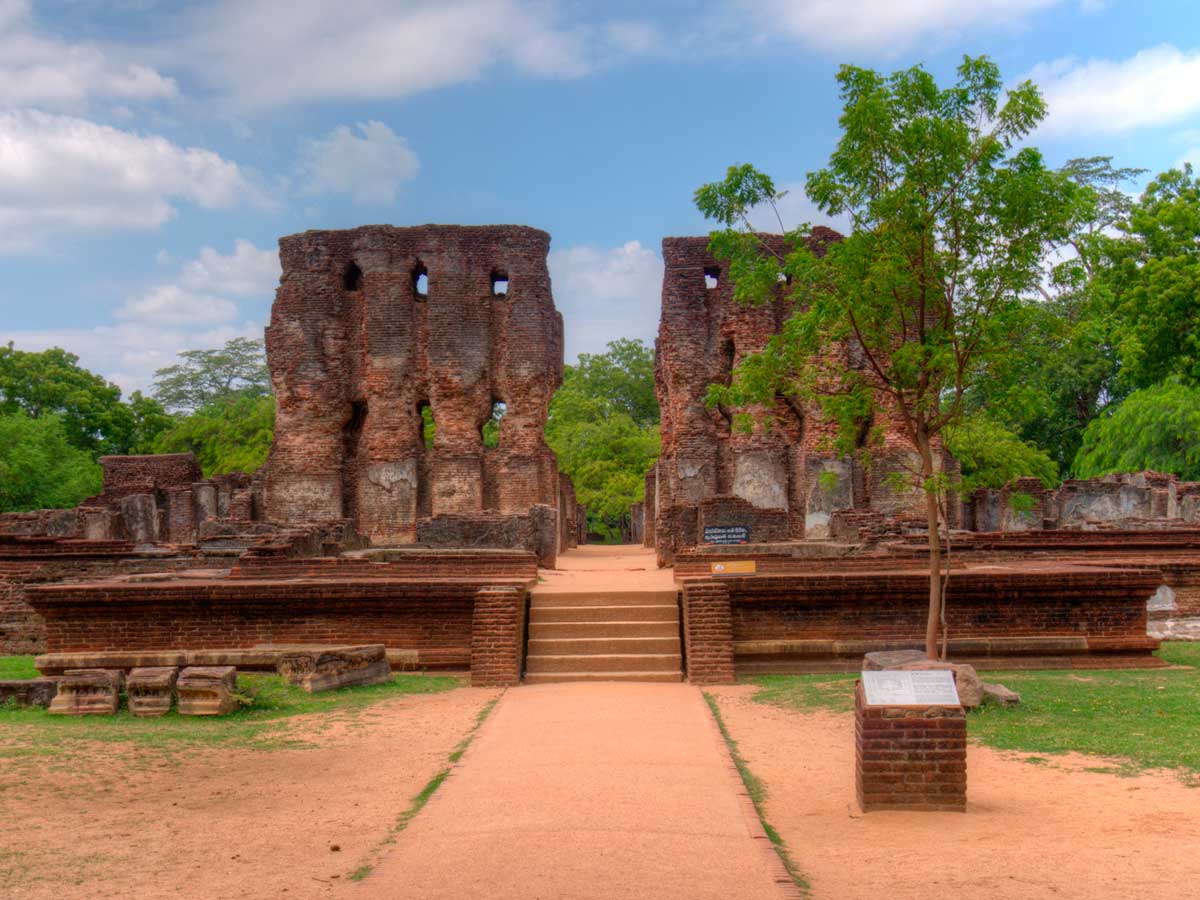
The Royal Palace Polonnaruwa
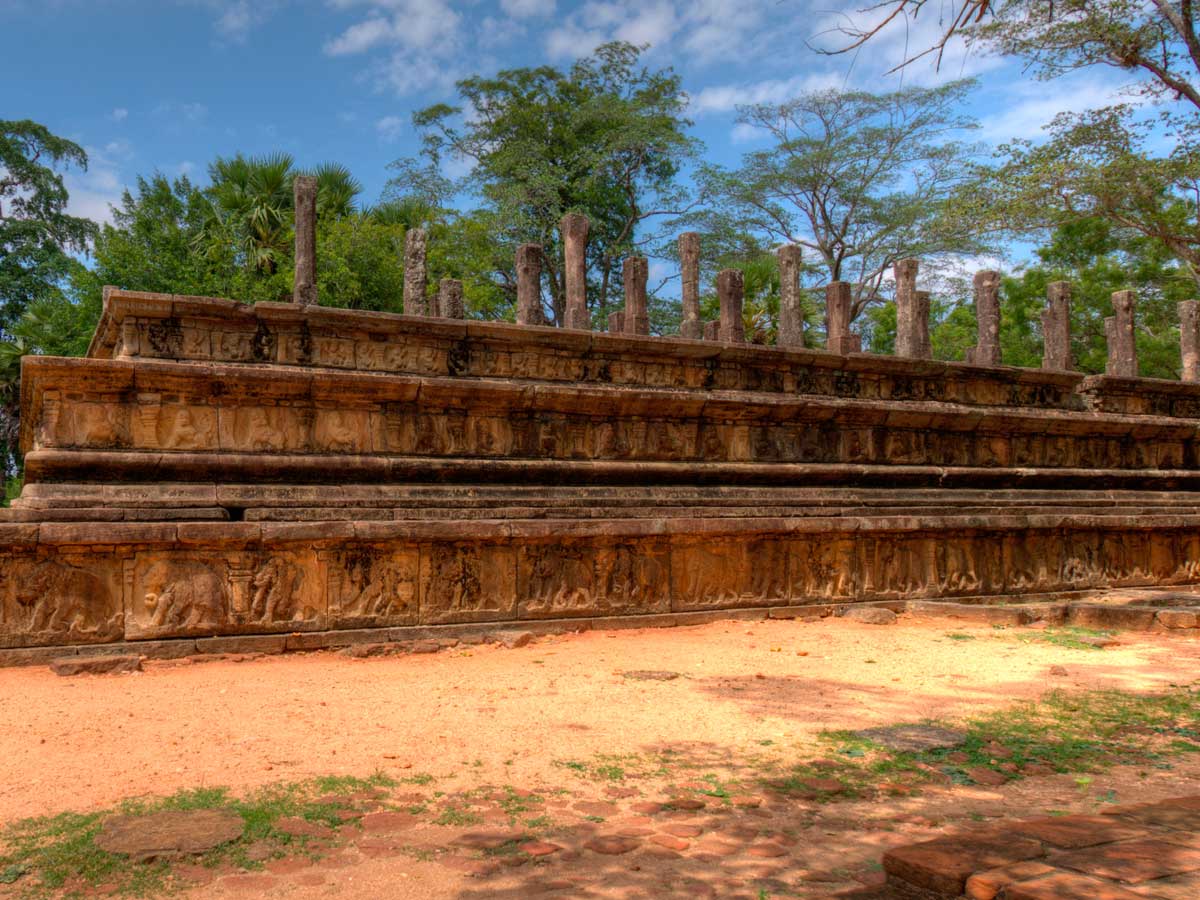
The Audiance Hall
The ancient structure of the Polonnaruwa Vatadage is a compact group of beautiful and impressive ruins within a raised up platform bounded by a wall. This is the most concentrated collection of buildings in the ancient city. It is believed to have been built during the reign of Parakramabahu I to hold the Relic of the tooth of the Buddha or during the reign of Nissanka Malla of Polonnaruwa to hold the alms bowl used by the Buddha. Built for the protection of a small stupa, the structure has two stone platforms decorated with elaborate stone carvings. The lower platform is entered through a single entrance facing the north, while the second platform can be accessed through four doorways facing the four cardinal points. The upper platform, surrounded by a brick wall, contains the stupa. Four Buddha statues are seated around it, each facing one of the entrances.
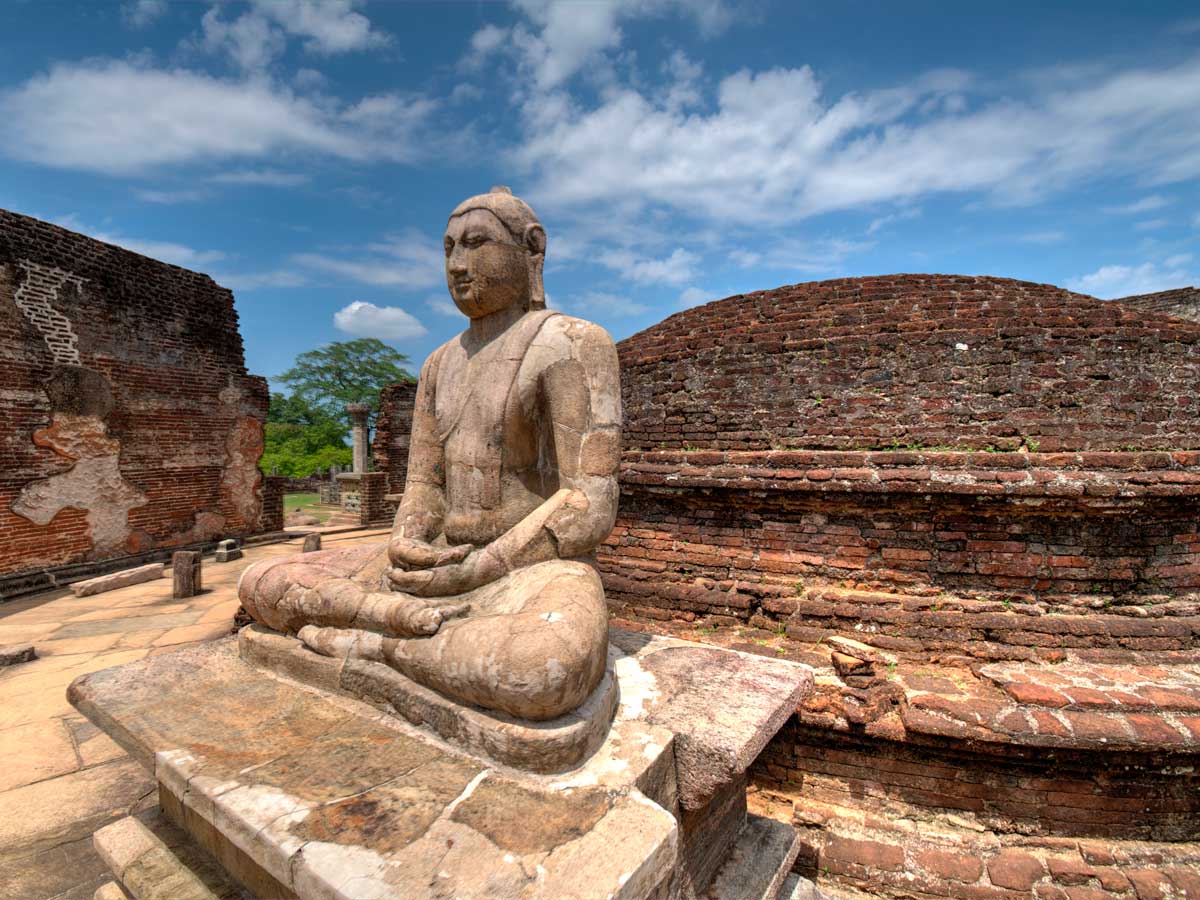
Polonnaruwa Vatadage
There are three notable Vehera structures in Polonnaruwa. Pabali Vehera an unusual shaped stupa was built by one of the king Parakramabahu’s wives, queen Rupawathi. The original name of this stupa is not known. The current name "Pabalu" (meaning beads) was derived from the fact that a large number of small glass beads being found during the excavation of the area around the stupa.
Rankoth Vehera is a huge stupa in excellent condition, at an impressive 54 meters tall! It is the largest in Polonnaruwa, the fourth largest in Sri Lanka. The stupa was built by Nissanka Malla according to the tradition of the stupas of Anuradhapura Maha Viharaya and bears a close resemblance to Ruwanwelisaya. A stone inscription situated close to the stupa even identifies it by the name "Ruwanweli". However, it has come to be known by the currently used name, Rankoth Vehera which roughly translates in English as "Gold Pinnacled Stupa".
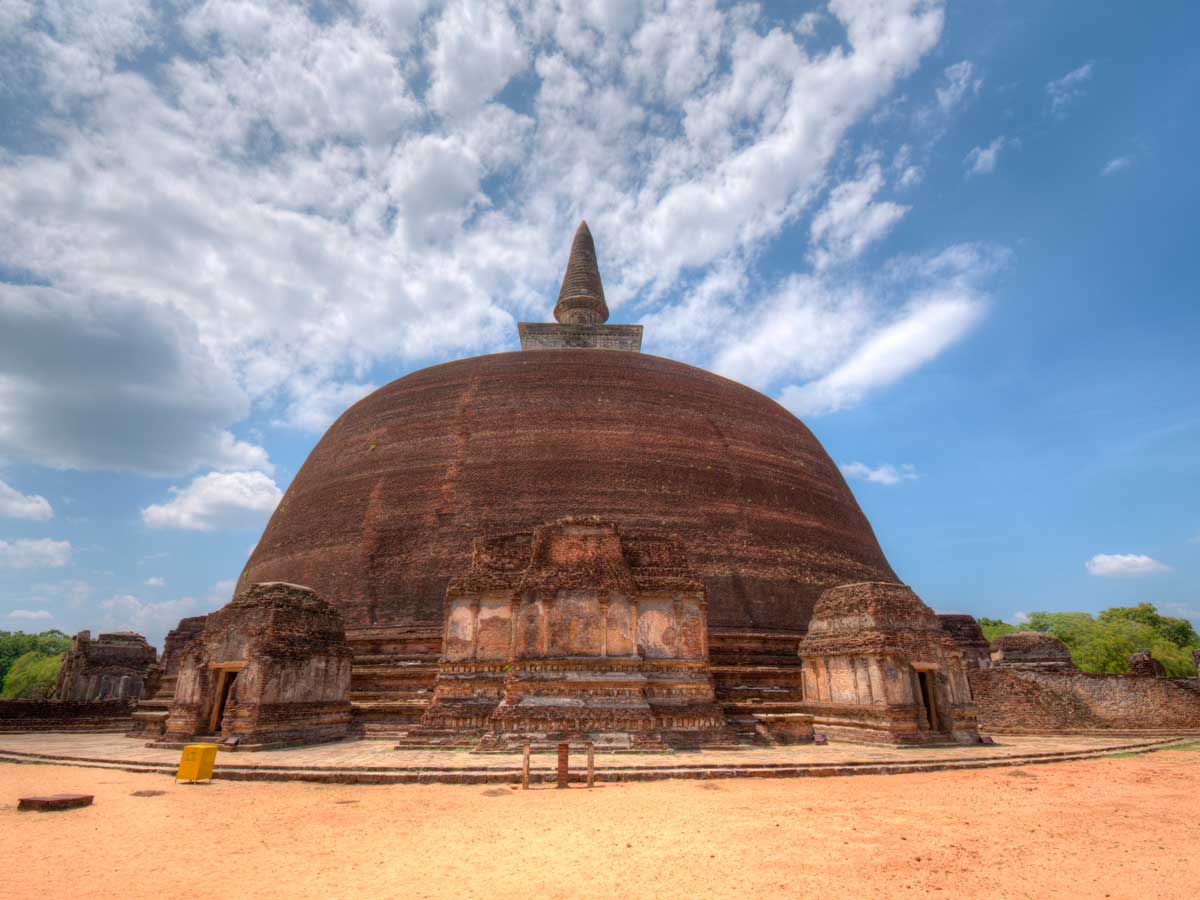
Rankoth Vehera
The beautiful stupa Kiri Vihara (meaning “milk-white”) was built in honour of the King`s Queen. When the archaeologists came to the area and cleared it from the overgrown jungle, they found the original lime plaster still in white perfect condition after 700 years! This is the best-preserved unrestored stupa in Polonnaruwa.
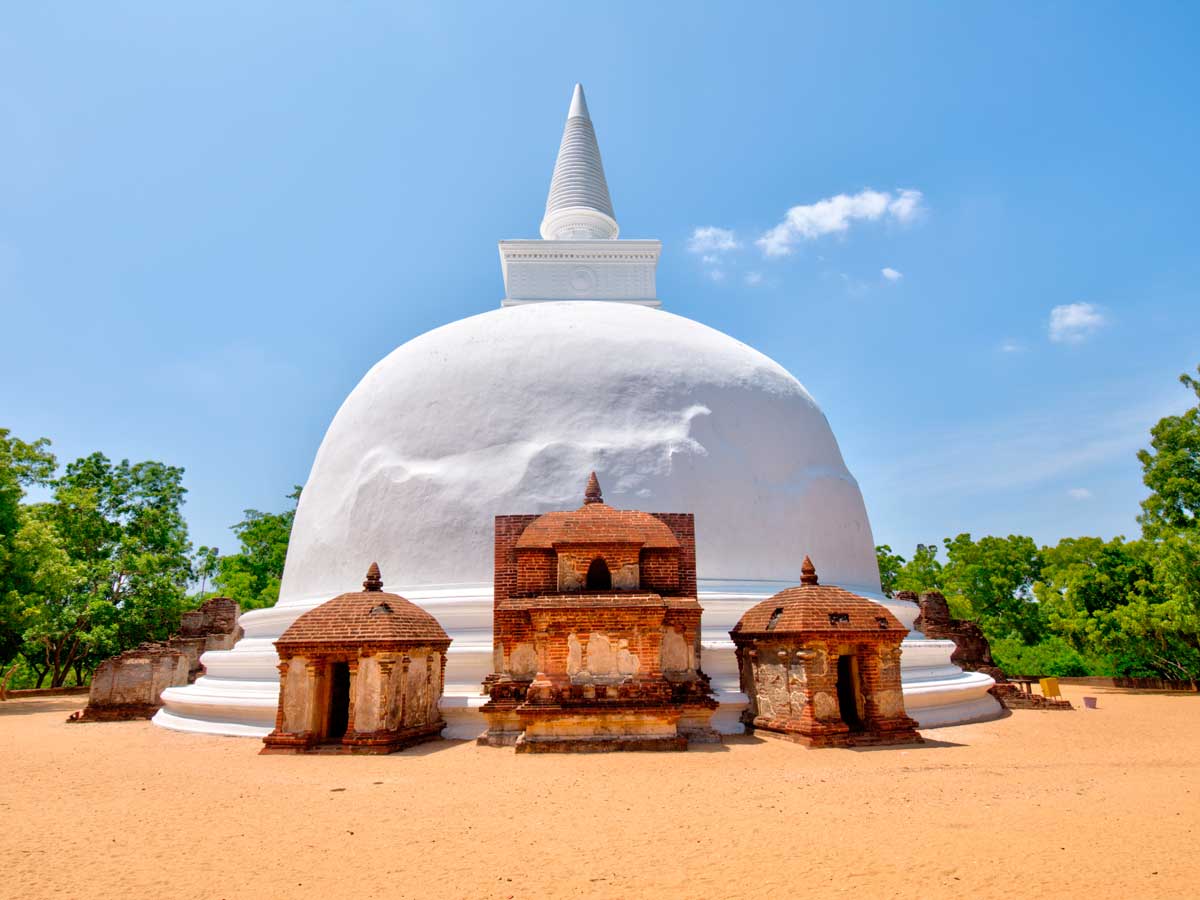
Kiri Vihara
Polonnaruwa Lankathilaka Image House is a colossal Buddha image house built by king Parakramabahu (1153-1186) located just to the south of Kiri Vehera. The building is constructed entirely of brick and the outer walls are covered with elaborate designs and carvings. The Buddha statue is of clay brick construction and is 41 feet in height. Specially made flat bricks have been used to build this statue and today the portion above the shoulder is destroyed. At the entrance to the Lankathilaka building are two massive brick pillars, the tallest one is 58 feet in height. It is thought that these pillars would have been at least twice as tall this before destruction. The Lankathilaka is quite surprising on first impressions, mainly due to its unexpected size!
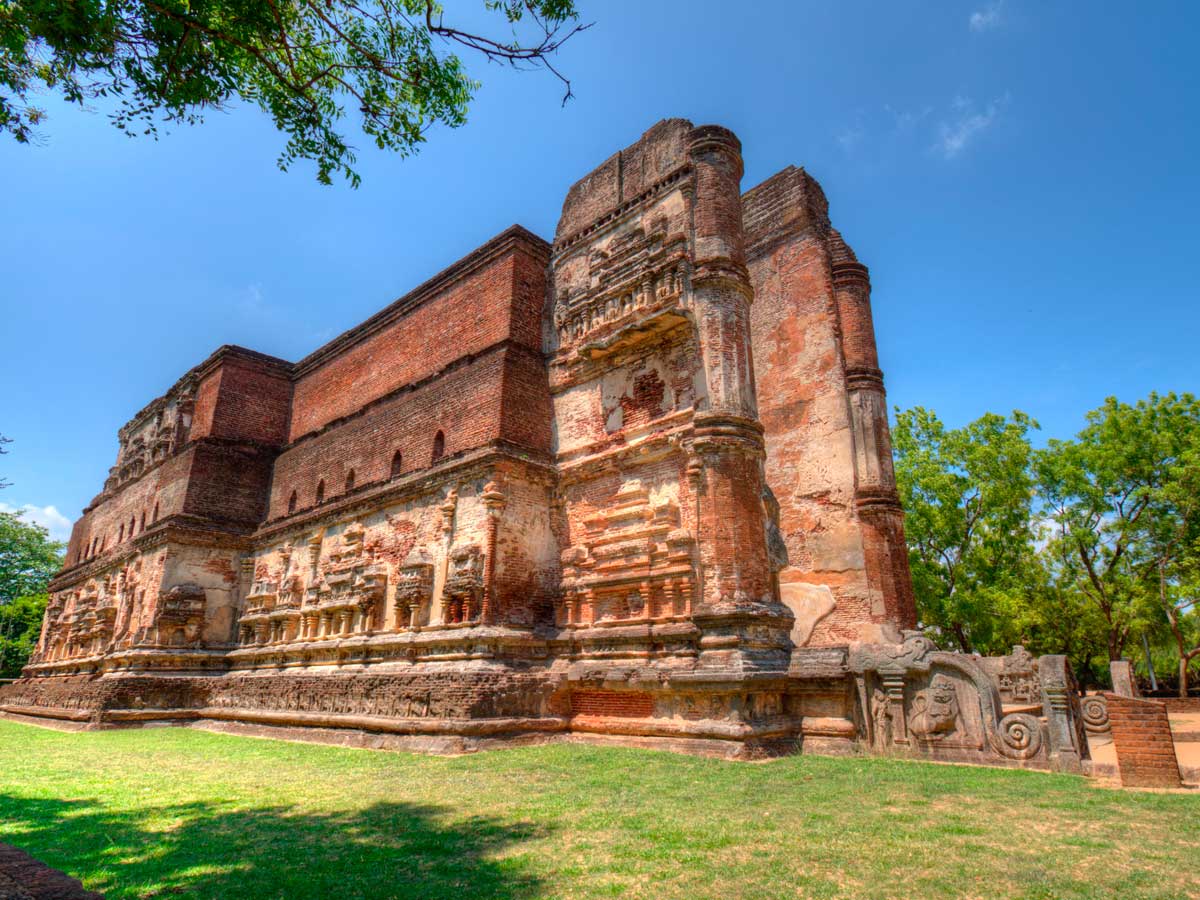
Polonnaruwa Lankathilaka Image House
The Gal Vihara, also known as Gal Viharaya and originally as the Uttararama, is a rock temple built in the 12th century by Parakramabahu I. The central feature of the temple is four rock relief statues of the Buddha, which have been carved into the face of a large granite rock. The images consist of a large seated figure, another smaller seated figure inside an artificial cavern, a standing figure and a reclining figure. These are considered to be some of the best examples of ancient Sinhalese sculpting and carving arts, and have made the Gal Vihara the most visited monument at Polonnaruwa.
We thoroughly enjoyed our day out at Polonnaruwa, even though the heat was exhausting at times, we found it a fascinating place. We recommend arriving as early as possible in the morning and taking plenty of time to visit each site. After a good few hours taking it all in you can reward yourself with a well-deserved lunch stop at the fantastic Jaga Food restaurant just outside of the ancient city.
Sigiriya
Rising from the tree-carpeted plains of Sri Lanka's dry zone, the spectacular citadel of Sigiriya sits atop a giant flat-topped rock measuring 200 metres in height. Known as the Lion Rock for the lions that were believed to dwell in the caves, the royal citadel occupies three acres on the summit with the sheer rock face harbouring cave temples and beautiful water gardens at the foot of the rock. Narrow staircases and walkways snake across the ochre-hued granite rock-face leading to the summit and although a vertigo-inducing climb, the spellbinding views from the citadel are well-worth it.
The weather worn foundations on the summit include the square brick platform of the Royal Palace and the outer wall at the very edge of the rock, as well as number of gardens and ponds. During the climb up the Lion Rock you'll also be rewarded with a glimpse of the famous fresco gallery of painted damsels positioned under an overhanging rock. This sheltering has meant that the 21 remaining frescoes have survived remarkably well-preserved with colours of red, yellow, green and black still visible. Close to these frescoes is the Mirror Wall, a highly polished white masonry parapet wall that protects a 2m-wide inner passageway along the rock face. The surface of the wall is marked with graffiti, largely comments written in Sinhalese that date back as early as the 7th century.
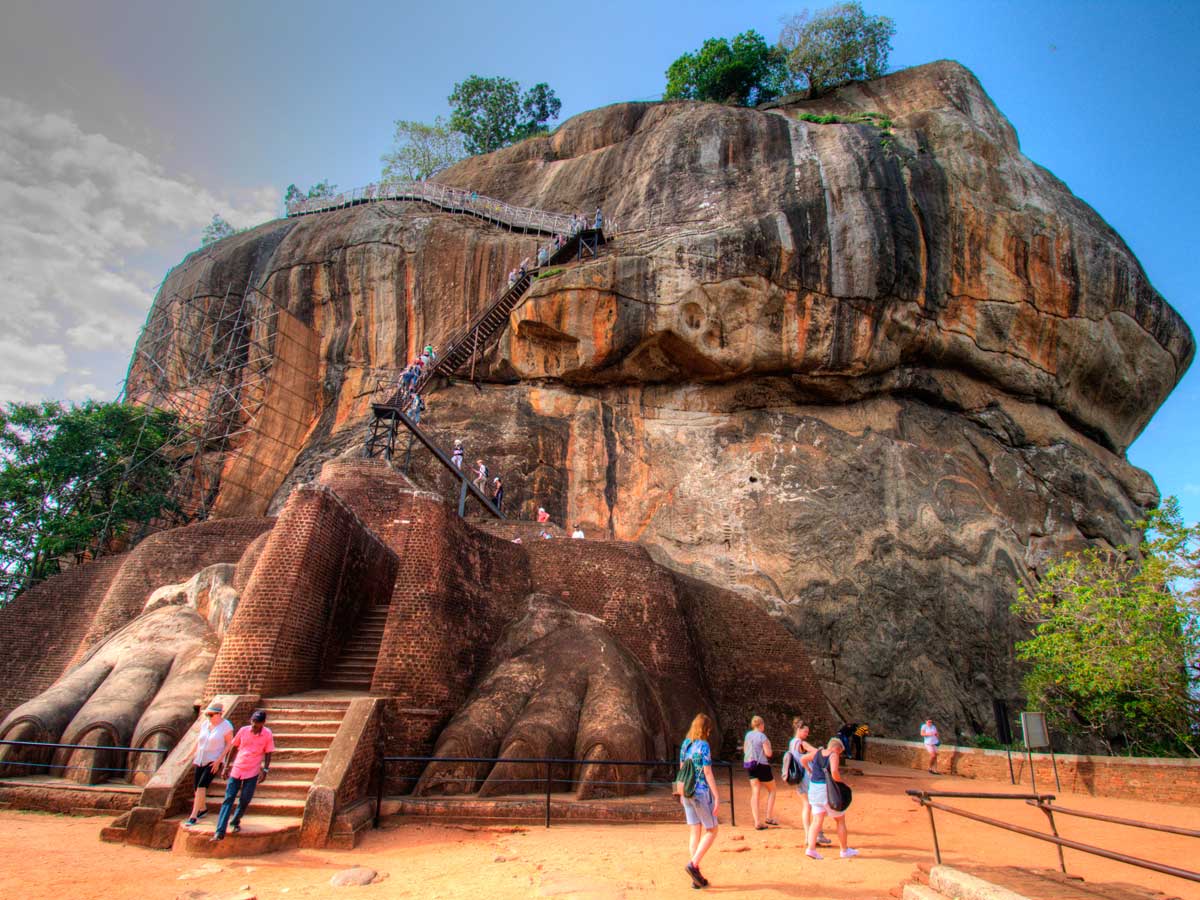
Sigiriya Lion Rock, view from "The Lions Feet"
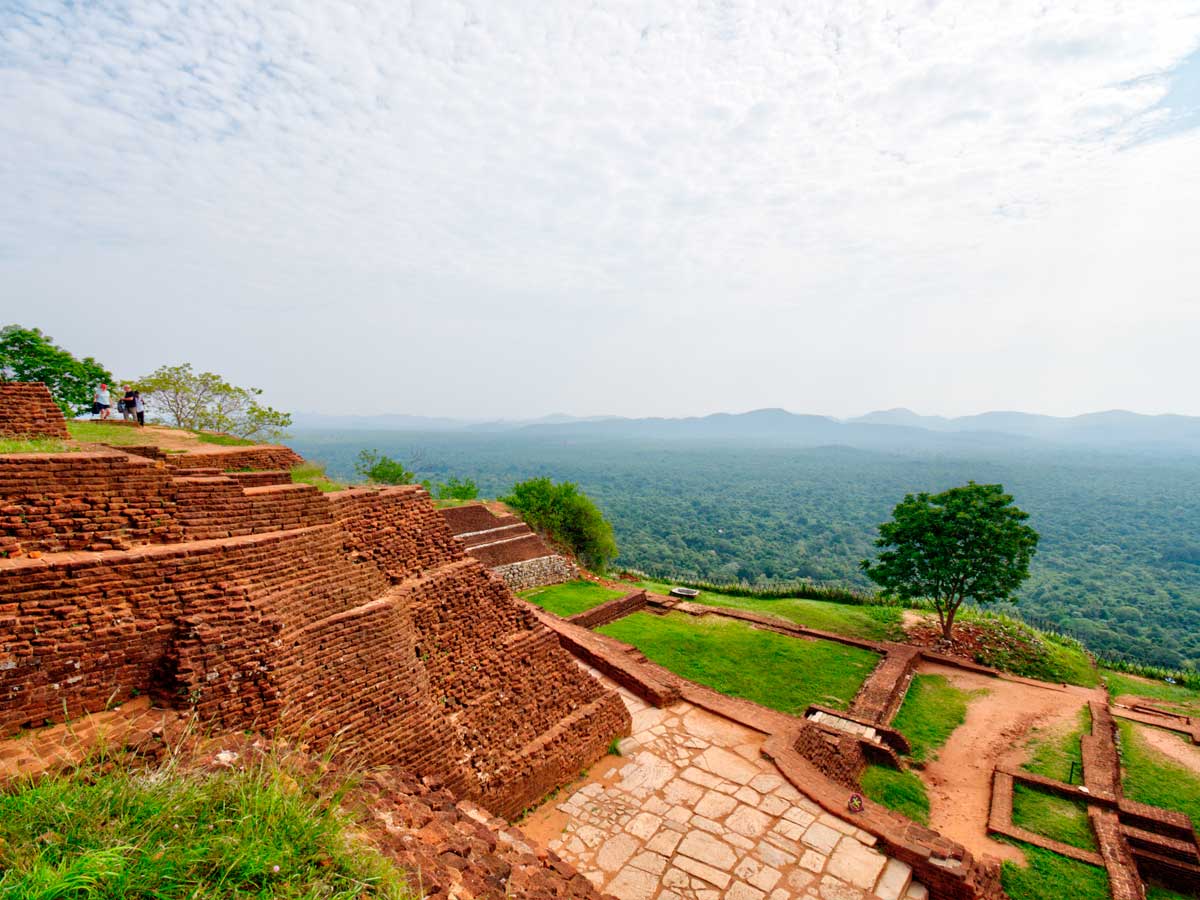
View from the top of Sigiriya Lion Rock
Minneriya National Park
Located in the centre of the Cultural Triangle and offering something of a respite for those suffering from ancient monument fatigue, the Minneriya National Park comprises a variety of lush habitats and wealth of wildlife. Dry tropical forests merge into steamy wetlands home to sambar, spotted deer, macaque, monkeys, sloth bears and even a small number of leopards, as well as plenty of bird species including cormorants, stocks, heron and pelicans. Not as well known as the national parks of Udawalawe or Yala, the reserve attracts fewer visitors yet is one of the best places in Sri Lanka to see wild elephants. Large numbers of the majestic creatures migrate here between July and October when the various parks in the region begin to lose their water levels. Thanks to the large centrepiece Minneriya Tank, an ancient reservoir that contains water throughout the year, in August and September as many as three hundred elephants congregate on the shores of the reservoir in an event that has become known as 'The Gathering'. Jeep safaris can be arranged in Minneriya National Park and are the best way of seeing elephants in their natural habitat. We had an awesome afternoon in the national park, we saw a herd of at least 50 elephants and quite a few babies amongst them, we also got caught in an epic thunderstorm whist out on the safari which certainly added to the adventure!
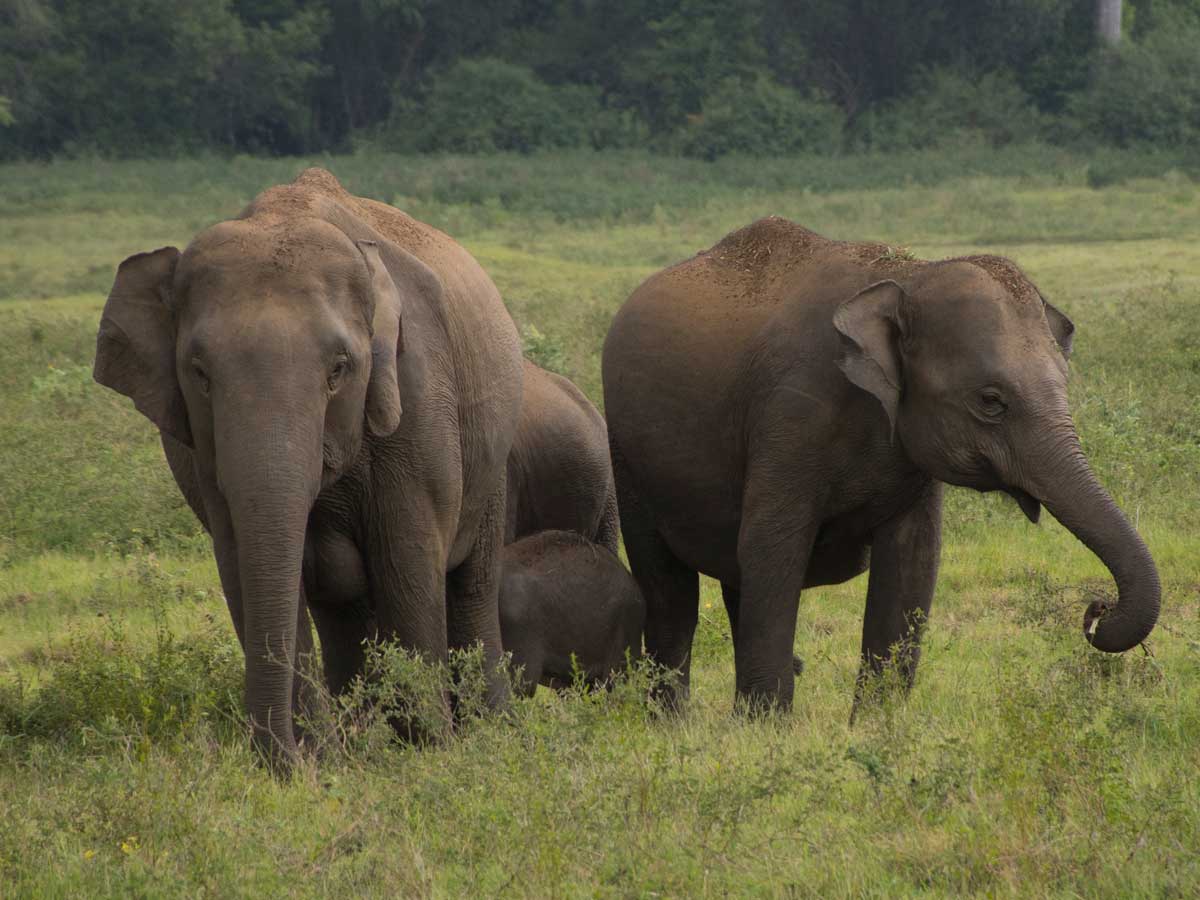
Elephant safari in Minneriya
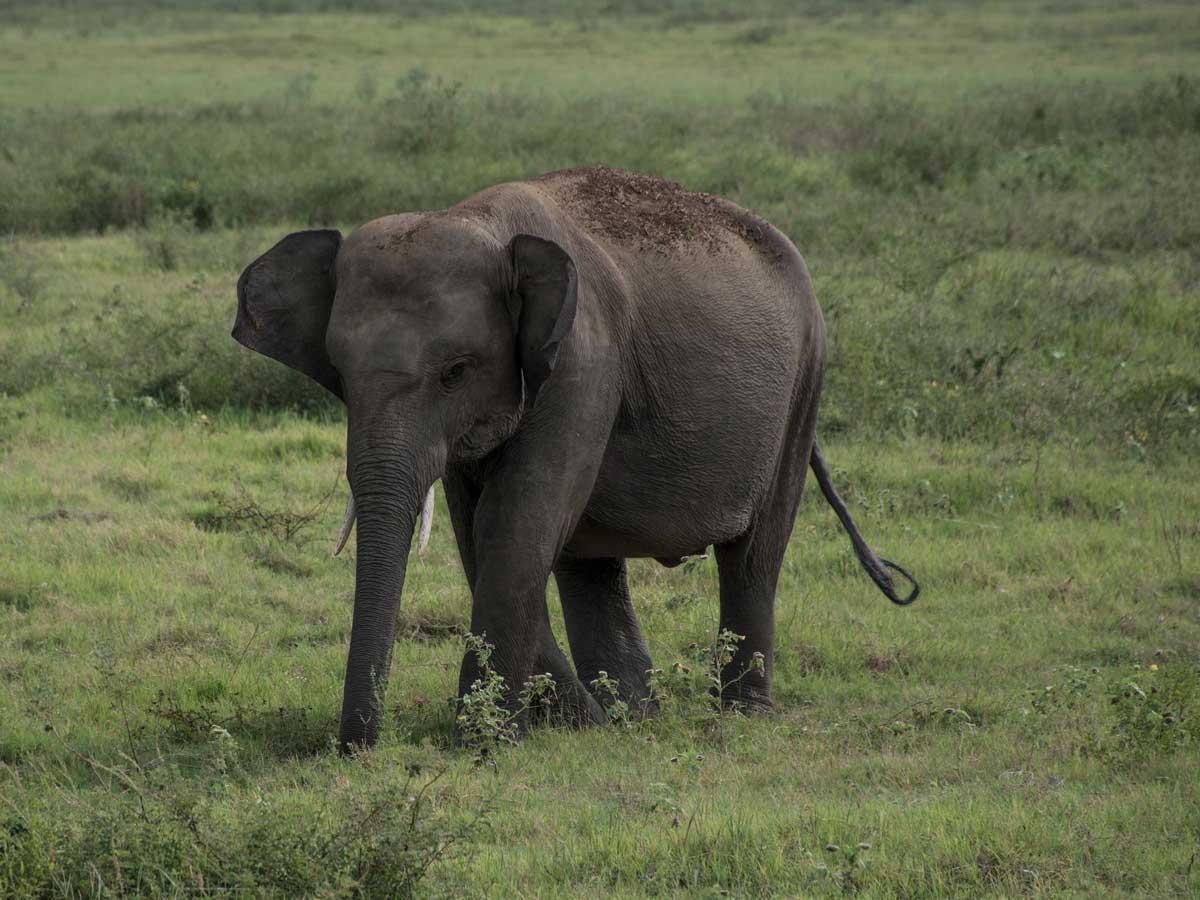
Elephant safari in Minneriya
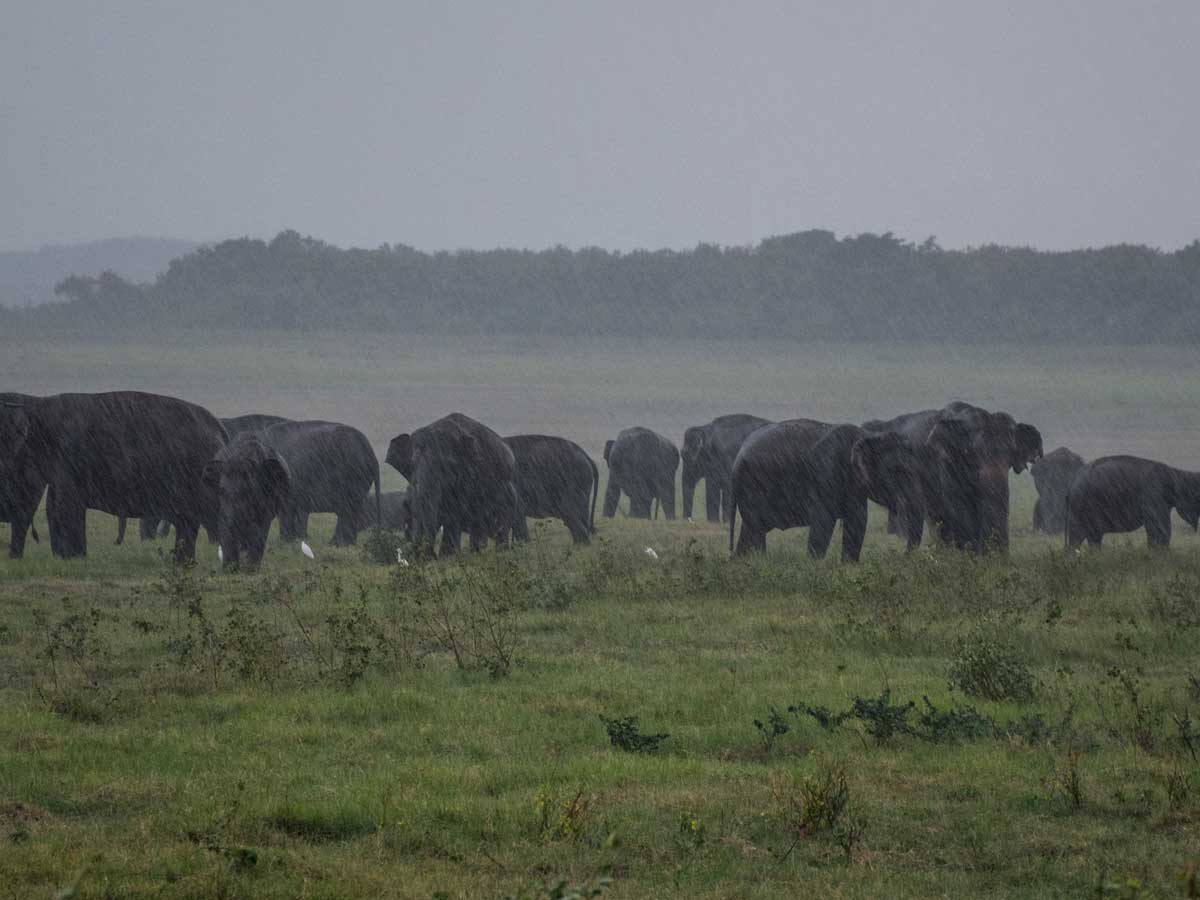

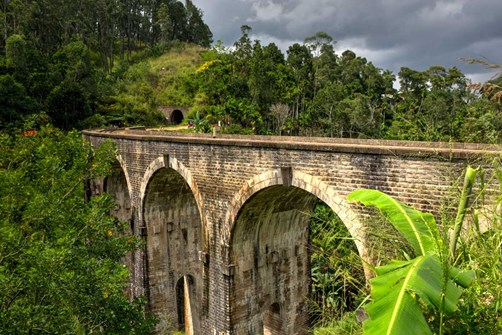
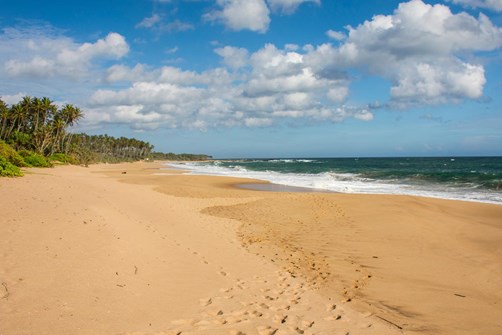
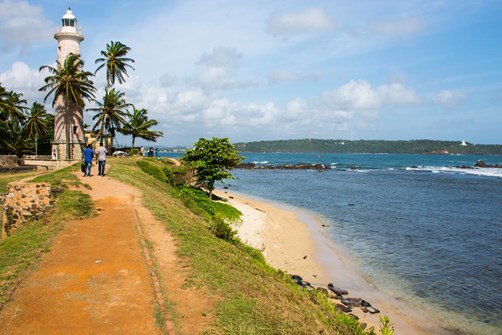
2 Comments
Wojtek reply
18 Dec 2019
Sri Lanka is my big travel dream! Hope to make it real one day! Such an extraordinary place!
Hilary reply
23 Jun 2019
What an amazing adventure, and your photos are lovely. I've never been to this part of the world, but its clear that I need to remedy that situation asap. #farawayfiles